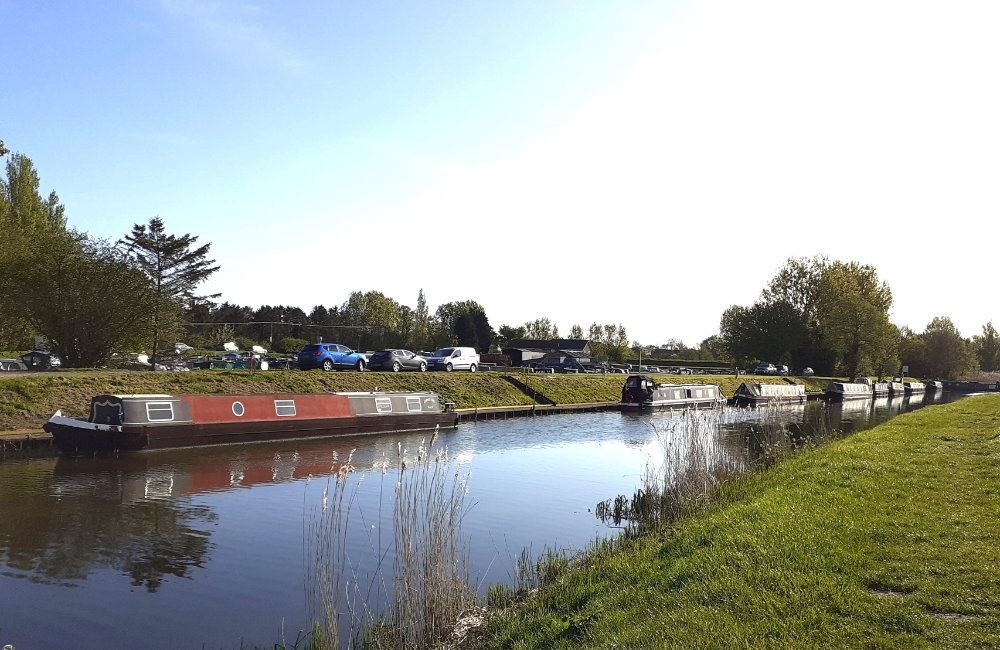Something Different
Top Find
There was so much happening during a recent feature at Decoy Lakes, I couldn’t cram everything in. The part of the complex I chose was Horseshoe, which was heaving with carp but also had lots of other species to offer. I almost wished I had approached this water another way, because big silver fish populations on carp dominated venues tend to get left alone, creating the potential for mega hauls. I always enjoy taking that direction, which often reveals amazing sport with roach, rudd, skimmers and other surprises. It was the close season, so nearby drains and rivers were out of bounds, but the pain of that was made less severe finding superb fishing like this on my doorstep. It was not what I expected, offering plenty of options to experiment. With so much water to explore and enough room to find your own space, what could be better?
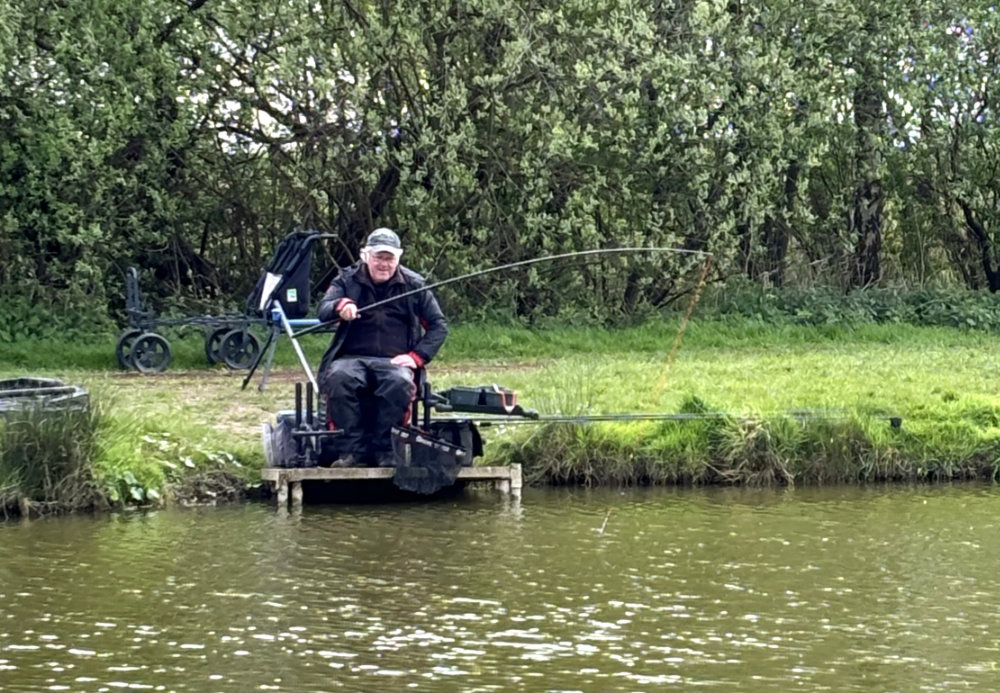
Banding Works
My first year on the fens produced many fish-packed days, to the extent during the warmer months I started banding pellets to beat the small stuff. I was having to do the same here to get through hordes of silvers, although on the drains I discovered it’s a great way of sorting out larger rudd, tench and bream. I’ve found metal pronged tools easiest to use with plain latex bands, which are less obtrusive. They allow threading the bait directly onto the bend of the hook. It’s quick and doesn’t make any difference compared to hair-rigged formats. I like the simplicity of using medium bands with hard feed pellets. They are less tight on the smaller 4mm size, where the bait often gets knocked off while fish are being played in, helping to avoiding bumping. With bigger mouthfuls, the band is stretched more, so it’s also less likely to impede the hook’s hold.
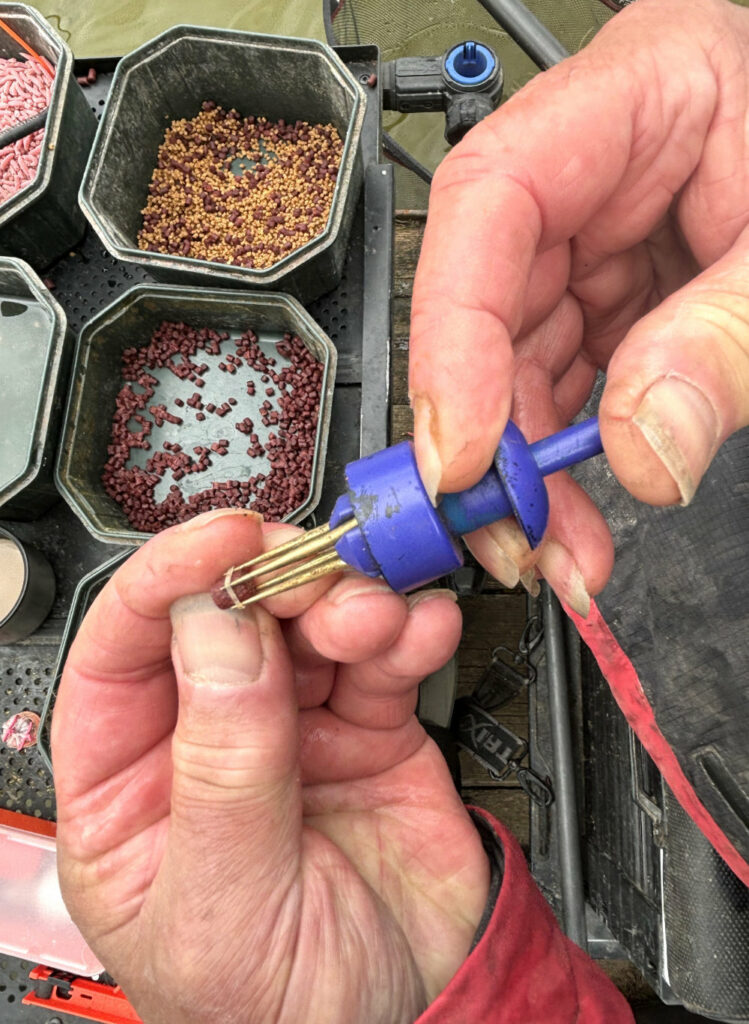
Top Peg
This swim had obviously seen lots of heavy usage at Decoy, resulting in the platform sloping backwards, not a problem for my seat box to cope with. This bream was a big surprise amongst all the hefty carp, along with plenty of smaller skimmers, roach, rudd and hybrids turning up. Apparently, there are barbel and tench in some of the lakes too, which I’m looking forward to checking out. The wide reed lined bay to my left looked perfect for bream. Now I know they are resident, maybe next time I’ll try a groundbait feeder over there, which might uncover more surprises. Another good way to discover what else is in here, apart from the carp, would be to lightly cup in micro pellets. Using lighter pole gear and presenting a small expander over the top is a good way of revealing all sorts of secrets on carp orientated commercials like this one.

Mini Plummets
While James Robbins was taking photos, he spotted the stash of small plummets I keep in the top drawer of my seat box. I make these using brass disc weights, the type you get on adjustable pellet and bodied floats. I glue plastic waggler base eyes through the middle of them. All that’s needed then is a small piece of silicone tubing to lock rigs on. I use these mini plummets for much of my pole fishing, also for finding the depth with wagglers. I don’t really have any need for heavy off-the-shelf designs, which are so popular these days. On places like this they can sink into soft bottom mud and give false readings. My less weighty alternatives gently land on top of silty bottom terrain, making me feel more confident my rigs are set exactly how I want them. I can easily adjust hook baits to hover over any bottom debris, or gently lay them over-depth.
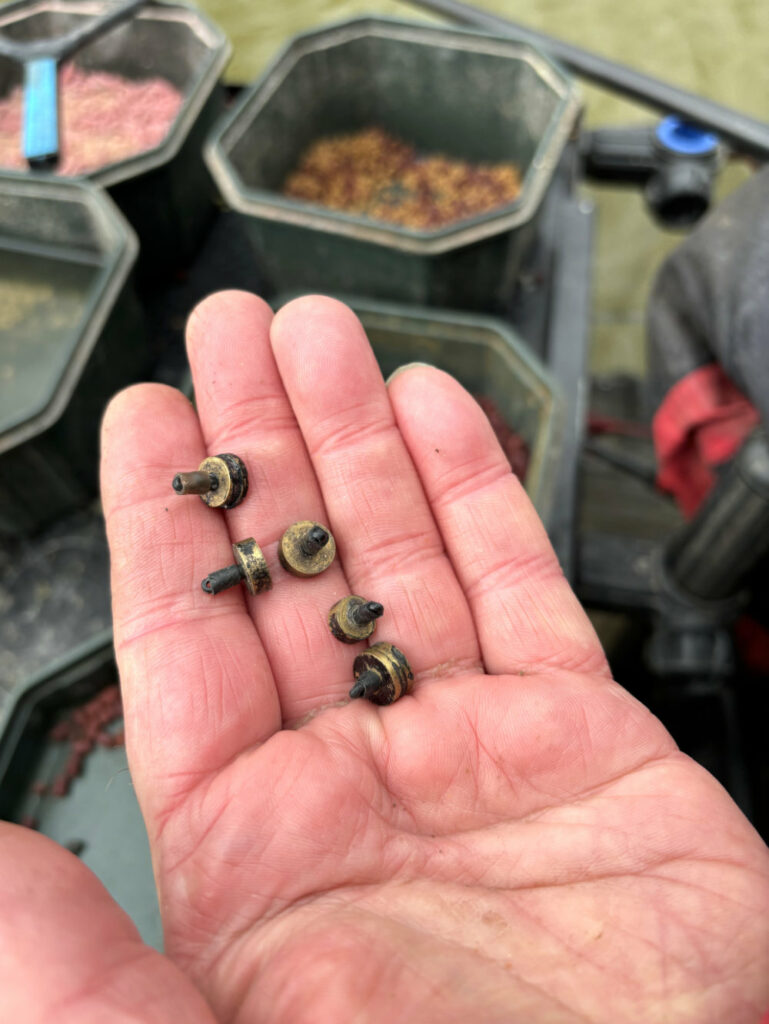
Unusual Baits
While I was showing James how my mini plummets perform, a hungry carp grabbed one as it cocked my pole float at dead depth. I jokingly explained that they help me to bag up much quicker than commercially available models, which gave us a good laugh. I also like to use small blobs of tungsten putty for plumbing up, the type of pliable weights carp anglers employ to nail their hook traces hard on the bottom. I find with this plasticine-like material you can bury the hook point in it, which prevents rigs from catching up, particularly handy in weedy swims. This allows you to find any clear spots, especially effective with pole and waggler tackle. Oddly enough, I’ve accidentally caught carp on my tungsten plummets as well, which I suppose they mistook for a dark pellet. There are many strange things it’s possible to catch fish with.
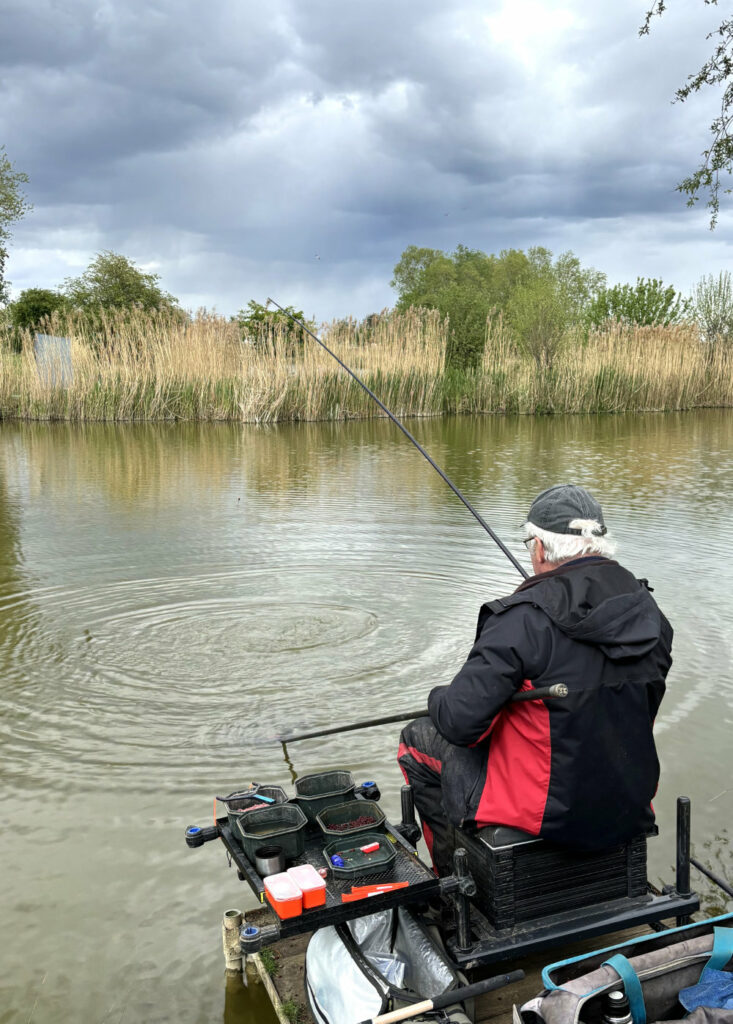
New Ways
I wanted to try out the Cadence CR10 12ft Match #3 Rod with a pellet waggler, but recent cold and wet weather had prevented bigger fish feeding up in the water. Instead, I thought I’d give it a go down the margins of a local lake, trying more unusual bait in the shape of prawns. There were rumours that this water held some big perch, but with so many small fish to contend with, conventional offerings like maggots, casters and worms were likely to get shredded. I decided the best way to feed down the edge would be with a cupping kit from my margin pole, potting in a mixture of krill micro pellets, casters and chopped prawns. I’ve done well before using this mixture, bearing in mind I’ve accidentally caught quite a few perch on red krill pellets. They obviously like them, while prawns have proved another lethal attractor for these predators.
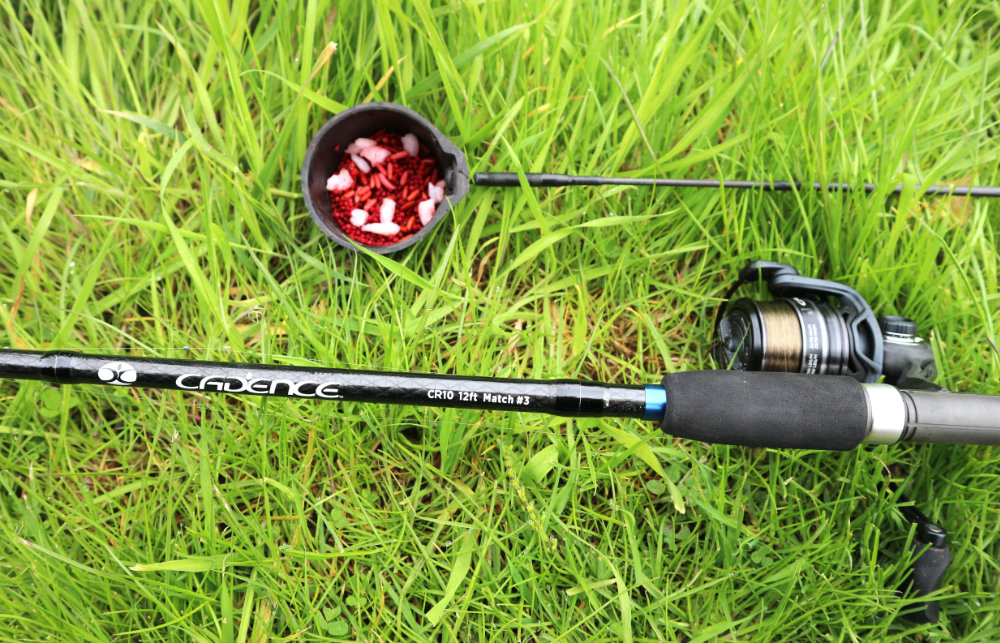
Ambush Spot
This swim by the opening of a small channel, between nearside rushes and overhanging bushes on a small island, looked an ideal haunt for big perch. The #3 rated two-piece 12ft rod immediately felt businesslike and alive in my hand. It obviously had lots of built in power, but was not over-stiff, or poker-like in any way. There was good depth close in, so after plumbing up, I set the running line tackle a few inches over-depth at the bottom of the nearside ledge. Although the water had a tinge of colour, it was clearer than normal due to the late frosts we had been experiencing this spring. It felt right being able to flick a light float rig down to my left, rather than waving a pole about over the feed area. The cupping kit did its job quickly enough, which I didn’t think risked spooking anything. I could also feed bits of prawn by hand.
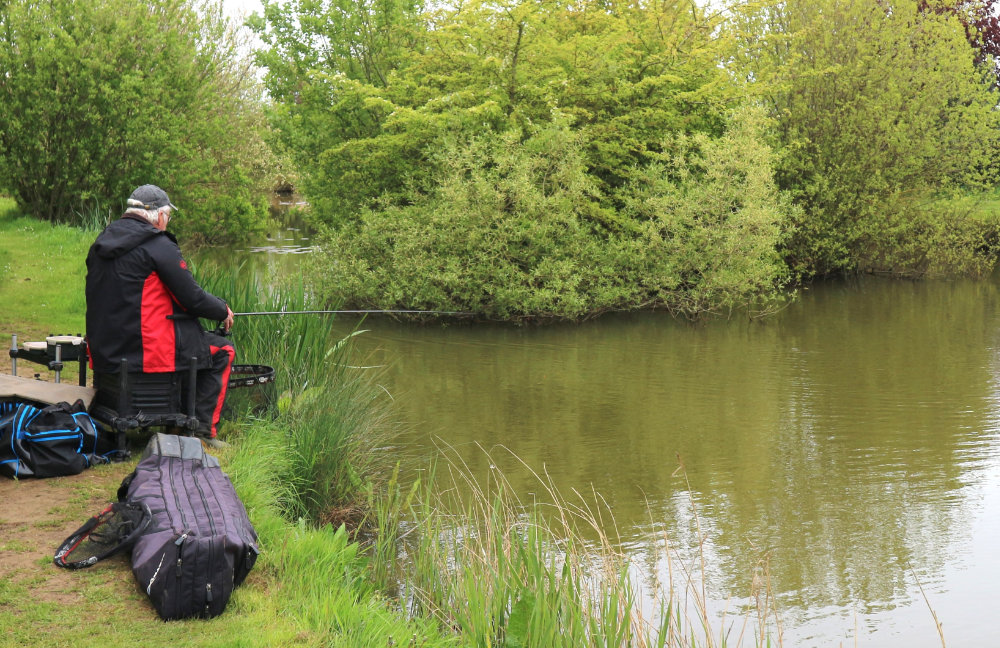
Top and Bottom
It’s unusual to strap a pole float to a rod and reel set up, but there are occasions when it works. I’ve done it fishing big dollops of groundbait paste down the margins, in places where carp were too big for pole tackle. This Edge Tackle C2 Commercial Float was perfect for supporting chunks of prawn, with its slightly thicker hollow tip. Remembering perch don’t like big hooks, I used a strong black nickel size 16, only lightly nicking the bait. I discovered I could gently swing the light float to where I wanted, using a strung bulk of micro shot, with two spread droppers below. It was a bit like fishing with a stick float at close range, only in non-flowing water. I found I could control the tackle okay. Main line was 6lb Edge Sinking Mono, attached to 4.3lb Edge Premium Line as a hook length: strong enough to deal with just about anything that might turn up.
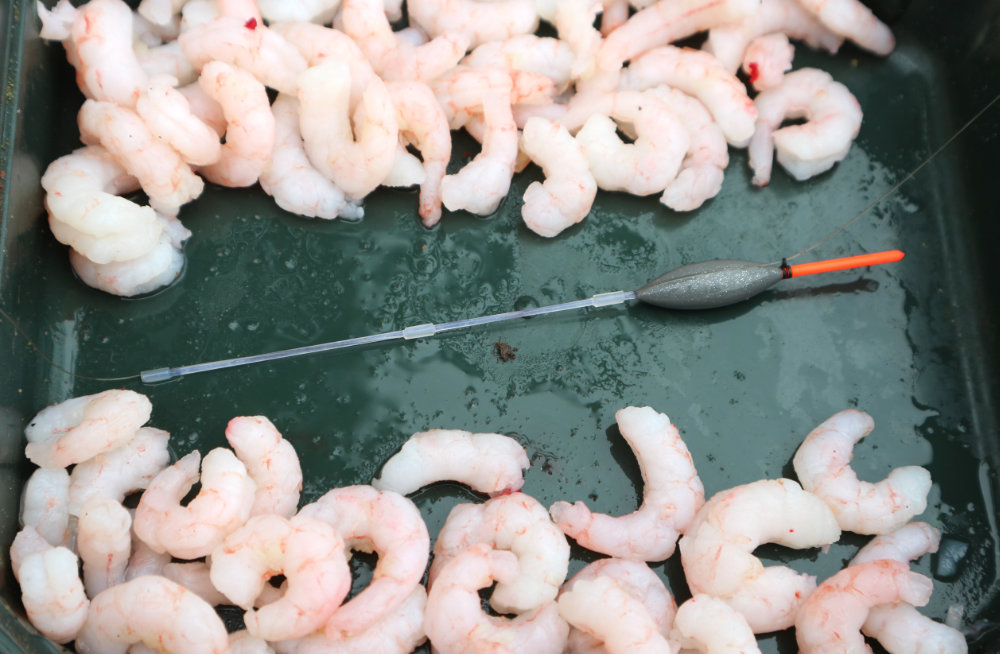
Not Expected
After cupping in freebies right over the top of my float, it didn’t take long to gain a positive bite. Instead of the perch I had been hoping for, this pristine roach somehow managed to engulf a big segment of prawn. It was the first of many fish. Every time I swung a chunk of the seafood in, it didn’t take long for my sensitive pole float to dither and then dart away. The businesslike rod I was using still took on a pleasing bend, whether playing silvers or carp. It turned out the latter loved prawns, especially after cupping in free bait. They were on it in an instant, while the silver fish tended to hang back and pick up the scraps later. Previous escapades with prawns had generally brought an instant response, then nothing. On this place it was crazy action all the way. At least I was getting my rig down to the bottom, through the hordes of small stuff.
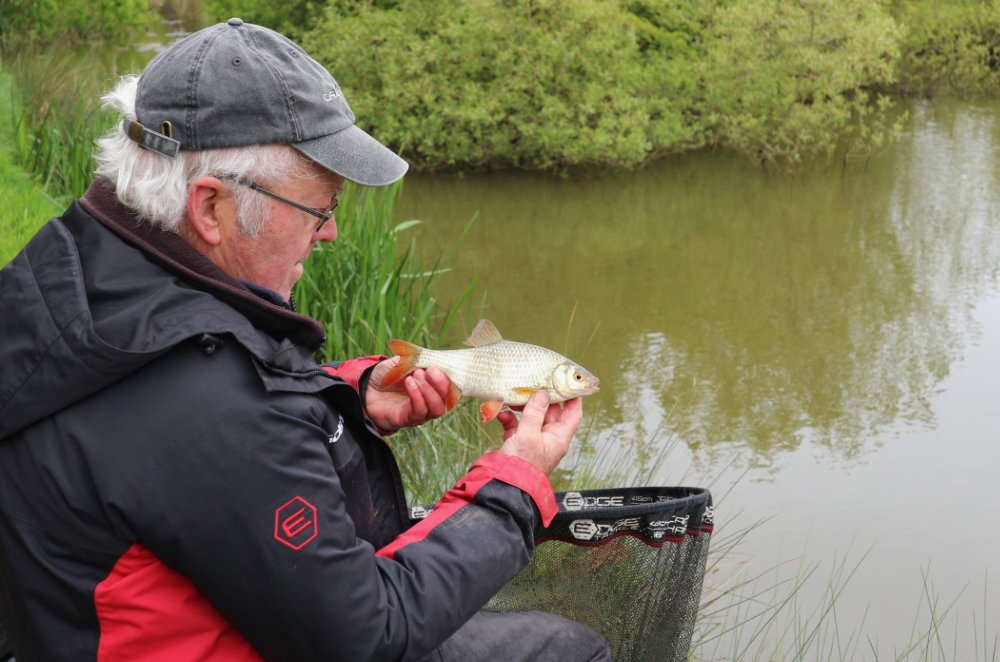
Changing Works
I have to force myself to try different baits and tactics, especially on prolific venues, where it’s too easy to keep reverting to previously successful combinations. I was glad I had taken a completely new route, because it was keeping me busy, along with the hope of a big perch turning up. The chances of that with baits like maggots or worms would be minimal with so many small fish to contend with. At least with bigger chunks of prawns I was finding better quality and lots of netters. Plenty of carp and F1s were giving me a good scrap, but a big surprise was the number of roach and rudd I was finding. An even bigger surprise was fair-sized skimmers turning up, some pushing the pound mark. A few hybrids also kept my interest, but try as I might, there was no signs of any perch. I had caught odd ones here before on other baits.
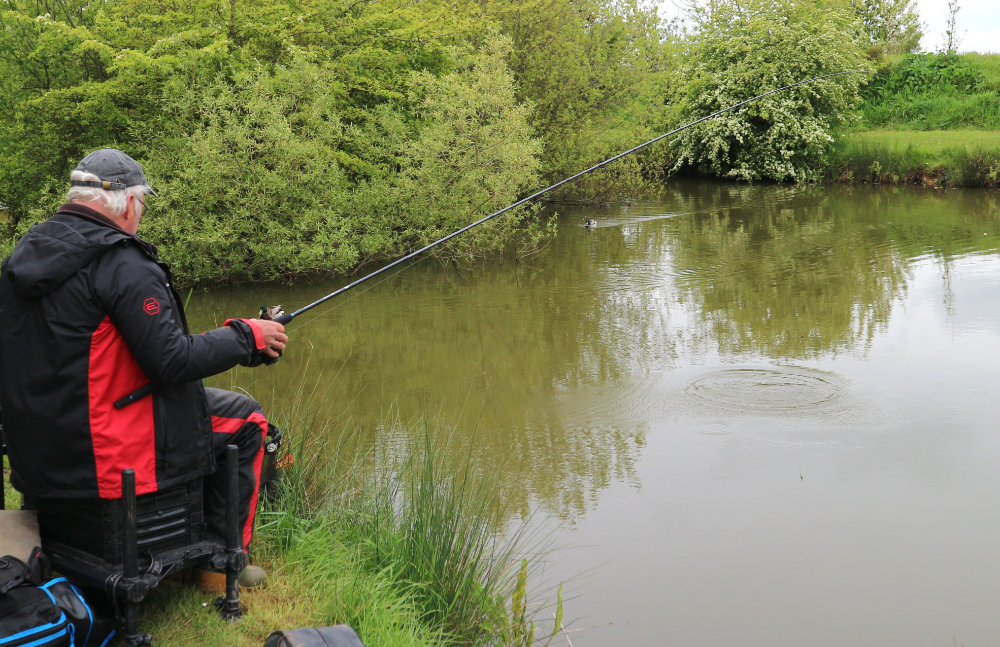
In Limbo
The mysteriously missing perch must have been shoaled up somewhere else, perhaps ready for spawning, but it didn’t matter. My unusual approach was accounting for a big haul of mixed species, keeping pace with a mate close by who was using a more conventional pellet attack. I will definitely give prawns another go. It could be here or somewhere else, because I still have half a bag left in my freezer. Remembering other unusual baits I’ve caught with, I once did well with red Mystic Paste, which worked in desperation on a completely out of form venue. There were also some handy black float rubbers that performed wonders while using over-cooked hemp, which refused to stay on the hook. Another strange one was catching a 5lb bass on a small pellet of punched bread, using coarse gear while trying to fool crafty mullet in salt water.
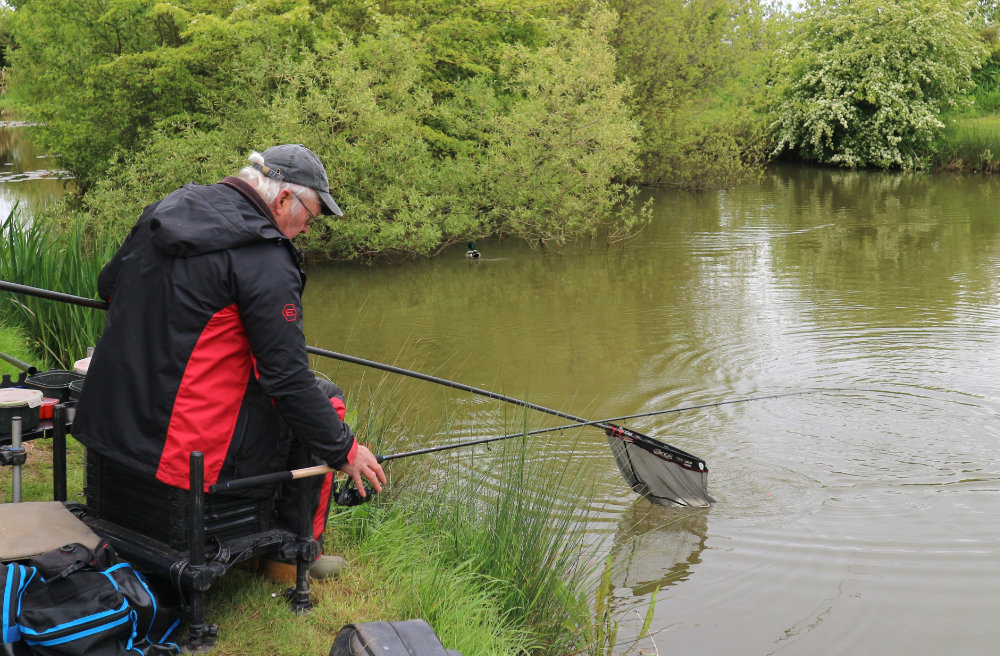
Another Challenge
There’s good news next season on the Old River Nene at March, where the famous marina bypass section is going to be much easier to access. A car park and track have been laid, whereas previously you had to risk life and limb trying to drop you gear off on the busy A141. I never drew this area on winter leagues when I fished them many years ago, but was always in awe of the mega weights the moored boats outside the marina threw up. I’ve walked this stretch several times recently, discovering loads of interesting water to explore, stretching far into the distance. There are wider and wilder parts that don’t look like they’ve ever been fished, ideal territory for big rudd, bream and tench that this part of the fens is so renowned for. All that’s needed is a reasonably priced March club card and a £20 deposit for an access key to the gate.
